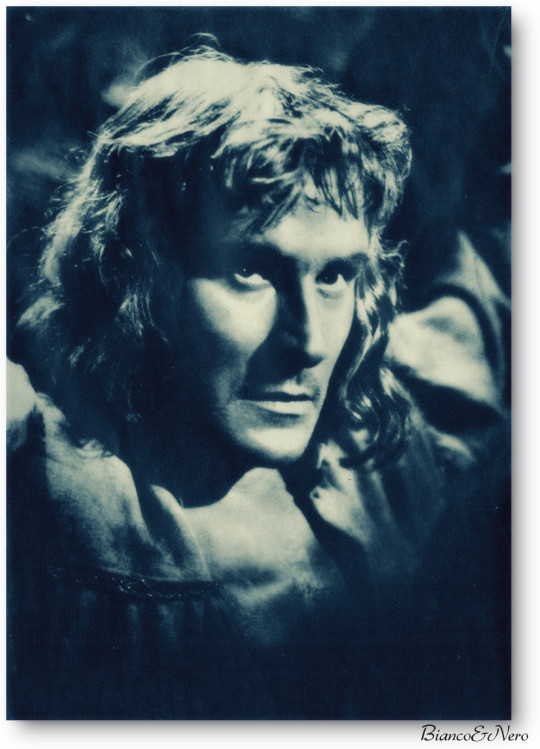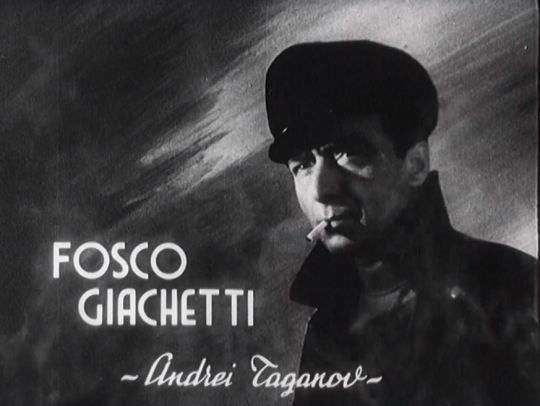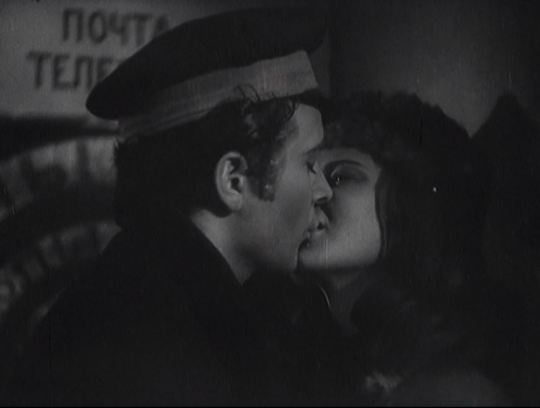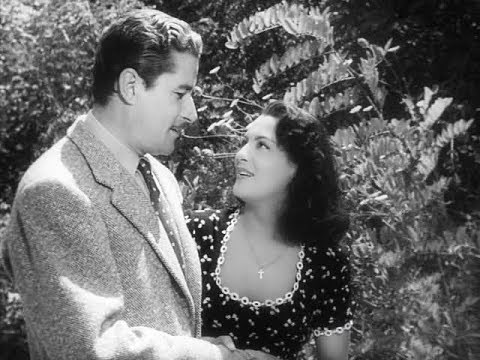#amedeo nazzari
Text

Amedeo Nazzari-Jeanne Crain "Nefertiti, reina del Nilo" (Nefertiti, regina del Nilo) 1961, de Fernando Cerchio.
12 notes
·
View notes
Text

Amedeo Nazzari è Nero Chiaramantesi ne La Cena delle Beffe ( 1942) diretto da Alessandro Blasetti
3 notes
·
View notes
Photo

The Sicilian Clan (Le clan des Siciliens), Henri Verneuil (1969)
#Henri Verneuil#José Giovanni#Pierre Pelegri#Jean Gabin#Alain Delon#Lino Ventura#Irina Demick#Amedeo Nazzari#Philippe Baronnet#Karen Blanguernon#Yves Brainville#Gérard Buhr#Elisa Cegani#Sally Nesbitt#Henri Decaë#Ennio Morricone#Pierre Gillette#1969
11 notes
·
View notes
Photo

bengasi (1942)
2 notes
·
View notes
Text
Il Tempo e le Anime (A mio padre e a mia madre) - Parte quattordicesima
Giuseppe, il carbonaio, non aveva ancora vent’anni.
«Sì…ti riconosco. Inbezéll… Smettila di fare l’imbecille», rispose sostenuta Bruna facendo spallucce. Il servizio di leva aveva interrotto i primi approcci amorosi; in tutto quel tempo la ragazza aveva ricevuto delle cartoline con soli saluti senza nemmeno un dolce pensiero. Congedato da poco, ancora non s’era fatto vivo con Bruna.
Com’era…

View On WordPress
0 notes
Text
5 novembre … ricordiamo …
5 novembre … ricordiamo …
#semprevivineiricordi #nomidaricordare #personaggiimportanti #perfettamentechic
2022: Aaron Carter, Aaron Charles Carter, cantante, attore e ballerino statunitense. Fratello minore di Nick Carter, aprì alcuni concerti dei Backstreet Boys per poi intraprendere una carriera musicale in prima persona pubblicando cinque album in studio tra il 1997 e il 2018. Suonava vari strumenti: il pianoforte, la batteria, la chitarra e il sassofono. Aveva una passione per lo sport e il…

View On WordPress
#Aaron Carter#Aaron Charles Carter#Amedeo Carlo Leone Buffa#Amedeo Nazzari#Daniele Barioni#Denis O&039;Dea#Fred MacMurray#Fredrick Martin MacMurray#George M. Cohan#George Michael Cohan#Jacques d&039;Adelswärd-Fersen#Jacques Fersen#Jill Clayburgh#John Beury Gallaudet#John Gallaudet#Louise Vava Lucia Henriette Le Bailly de La Falaise#Loulou de La Falaise#Mack Sennett#Michael Sinnott#Omero Antonutti#Silvio Laurenzi
0 notes
Video
youtube
PD, vent’anni e nulla è cambiato
0 notes
Video
youtube
Nous sommes tous des assassins (1952) Bande Annonce VF [HD]
Un soldato, ottuso e ignorante, sopravvissuto alla seconda guerra mondiale, continua a uccidere una volta finita la guerra. Quando provoca la morte di una guardia, viene condannato alla ghigliottina. Il suo difensore farà emergere durante il processo le responsabilità sociali dei suoi comportamenti devianti.
Note
Cayatte, giornalista e avvocato, al 13° film affronta il suo tema prediletto: il film è un appassionata requisitoria contro la pena di morte. Alle volte un po' didascalico, ma nel complesso un'opera avvincente. Scritto dal regista con Charles Spaak. Premio speciale della giuria a Cannes.
Siamo tutti assassini (Nous sommes tous des assassins) è un film del 1952 diretto da André Cayatte, vincitore del Premio Speciale della Giuria al 5º Festival di Cannes.[1
Titolo originale Nous sommes tous des assassins
Paese di produzione Francia, Italia
Anno 1952
Durata 115 min
Dati tecnici B/N
Genere drammatico
Regia André Cayatte
Soggetto André Cayatte, Charles Spaak
Sceneggiatura André Cayatte, Charles Spaak
Fotografia Jean Bourgoin
Montaggio Paul Cayatte
Musiche Raymond Legrand
Scenografia Jacques Colombier
Interpreti e personaggi
Marcel Mouloudji: René Le Guen
Raymond Pellegrin: Gino Bollini
Claude Laydu: Philippe Arnaud
Louis Seigner: abate Roussard
Georges Poujouly: Michel Le Guen
Louis Arbessier: avvocato del tribunale dei minori
René Blancard: Albert Pichon
Amedeo Nazzari: dottor Detouche (versione italiana)
Jean-Pierre Grenier: dottor Detouche (versione francese)
Yvonne Sanson: Yvonne Le Guen (versione italiana)
Jacqueline Pierreux: Yvonne Le Guen (versione francese)
Antoine Balpêtré: dottor Albert Dutoit
Léonce Corne: capitano Girard
Henri Crémieux: avvocato di Bauchet
Jean Daurand: Girard, l'uomo della cabina telefonica
Yvonne de Bray: prima cenciaiola
Lise Berthier: seconda cenciaiola
Guy Decomble: un ispettore
Monette Dinay: la ragazza di Charles
Julien Verdier: Bauchet
Yvette Etiévant: moglie di Bauchet
Juliette Faber: Francine Saulnier
Paul Faivre: Biribi
Anouk Ferjac: Agnès
Paul Frankeur: Léon, capo delle guardie
Renée Gardès: madre di Le Guen
Jérôme Goulven: Noblet
Elisabeth Hardy: madre della bambina
François Joux: Saulnier
Alinda Kristensen: donna svedese
Charles Lemontier: procuratore
Roland Lesaffre: detenuto barbiere
Liliane Maigné: Rachele
Daniel Mendaille: carceriere capo
Eliane Monceau: amica di Dutoit
Jacques Morel: Charles
Jean-Paul Moulinot: direttore della Santé
Lucien Nat: avvocato dell'accusa
Line Noro: Louise Arnaud, madre di Philippe
Marcel Pérès: Malingré
André Reybaz: padre Simon
Alexandre Rignault: gendarme
Solange Sicard: madre di Agnès
Sylvie: Laetitia Bollini, madre di Gino
Georges Tabet: la pianista
Jean-Marc Tennberg: Fredo
André Valmy: il piccolo Louis
François Vibert: madre di Mousset
Henri Vilbert: signor Arnaud
0 notes
Text
NOI VIVI - ADDIO KIRA! - (Goffredo Alessandrini, 1942)

“Noi vivi” (aka "We the Living", a movie that, by its unusual length has always been released as 2 separated films titled respectively "Noi vivi" and “Addio Kira!”) emerges undoubtedly, at any honest impartial critique, if not the director's most "perfect" movie, as the real "masterpiece" of Goffredo Alessandrini, a filmmaker who was one among the most creative and skilled directors of the Italian cinema between the two World Wars and is nowadays almost forgotten or, I should say, "disowned" by the cinematic sociability due to some of the successful movies he directed in the 1930s that praised and publicized the nationalist themes of the Fascist regime of which he was quickly considered as a kind of cinematographic mentor.
Nevertheless, and before I dwell on the film that is the subject of these considerations, I think it is convenient to further deepen the original and very interesting personality of this adventurous and intellectual filmmaker who could well be defined a sort of living icon that embodied those concepts of bold individuality and heroic creativity so cherished to the regime that then ruled Italy.
GOFFREDO ALESSANDRINI.
Goffredo Alessandrini was born in Cairo (where he lived until he was a teenager) in one of the most important and richest families of the Italian community in Egypt.; his father was a great businessman (he directed also the building of the Assuan big dams) and he wanted to give his newborn son an Anglo Saxon education (by an English governess) interspersed with frequent travels to Europe. When he attained suitable age, Goffredo was sent to study engineering at Cambridge, England, but the guy was more interested in sports activities than studying so he left the University and went to Italy where he practiced various sports activities (he also became National Champion in obstacle race). The following year he enrolled in the Faculty of Architecture and Scenography; in this area he was able to win the first prize in cinematic scenography (he was become a cinema passionate after having watched "L'Atlantide" of Jacques Feyder). His career in cinema was overwhelming and it effectively started when Alessandro Blasetti wanted him as assistant for his "Sole", one of the most innovative movies of the Italian silent cinema. His fate was set: his first movie ("Douze mille hommes force", a "colossal" documentary on the construction of a gigantic dam on the Nile in which 12,000 men move like ants in the spectacular Egyptian scenery) made him being known in film environments and in 1931 he was assigned the direction of the Italian version of a successful German comedy; the title is "La segretaria privata" (from the original "Die Privatsekretärin” di Wilhelm Thiele) and the movie suddenly became the first great success of the Italian sound cinema.
After a few years in Hollywood, where he developed his experience as a dubbing director, as a writer, then as a consultant director, in 1934 he returned to Italy; here he directed a delicate comedy; "Seconda B", an adolescent romance that gets another great hit from the audience. After his biographic movie about “Don Bosco”, that represents his most personal film, Alessandrini staged a refined period movie in 1936: "Cavalleria", starring Amedeo Nazzari and Luisa Cegani, the romantic bittersweet story of an impossible love that stands, in my opinion (and by a purely cinematographic pov) as his best movie.
In the following years Alessandrini, now an established director, directed “Luciano Serra, pilota” from a screenplay he had written with Roberto Rossellini; if not fully successful (there is too much discontinuity, imo, between the first and the second part of the movie) the film won the Coppa Mussolini, a prize that then equalled the prestige of the actual Golden Lion of the Venice Film Festival. Three spectacular movies followed: the colonial-propagandist “Abuna Messias” and “Giarabub” interspersed with (the superior) “Caravaggio”. In the early 1940s, Alessandrini, as well as a famous filmmaker, was considered a real "celebrity", a fascinating adventurer with stylish habits and expensive tastes., a handsome man who showed off the set (where he could assert his professional qualities) an inherent magniloquence and a fascinating taste for excess. Alessandrini was a great metteur-en-scène of epic sequences and ruthless battles where he could make to shine his figure of a director/commander who jumps among the opposite battlefields riding his white horse and directing fake fights between African tribes (they say that, for the huge masses required in his war movie "Giarabub", he was able to obtain from the Government, the 8th Regiment Bersaglieri and a whole battalion of Camice Nere).
As it appears to me, Alessandrini enters the immense living scenography of his mass movies with sincere vitalist propensity and brilliant environmental adherence.; these characteristics establish the visual charms of his choral movies but explain also both the unavoidable heeling of the narrative structure and a pervading sense of incompleteness of the movies in question. I think Alessandrini was not (if in a minimal part) a director in the service of the regime but one of those intellectuals who formed their culture and their behavior by inspiring themselves to D'Annunzio and (ironically) just due their adversion to the most trivial sides of the Mussolini-an rhetorics, they proved to be the most suitable persons to grant the Fascism the popular consensus.
However, now, at the beginning of the Forties, the director is ready for his most representative and important movie, the cinematic adaption of Ayn Rand's bestseller "We the Living", an (almost) 4-hour length film that was released divided into 2 episodes; in it, Alessandrini finds the easy, happy, popular, measure of a modern "feuilleton" (not in the pejorative meaning of the word); it may be said that, paradoxically, facing a so emphatic and overflowing tale, he found the inspiration to make, with the book at hand, the movie of his life and, probably, one of the best love melodramas ever filmed.
NOI VIVI & ADDIO KIRA!
The story is set in Russia, few years after the Revolution, when the Argounov's (a White Russian family) must leave the Crimea and move to St. Petersburg; there the younger daughter Kira (Alida Valli) falls in love of an aristocratic, Leo (Massimo Girotti), who is supervised by the Soviet secret police; she is arrested by antisovietism but is then released upon order of political commissioner Andrej (Fosco Giachetti). Andrej loves Kira who is preoccupied by the poor state of health of Leo; desperately in search for money to cure him, Kira let herself seduce by Andrej..... the destiny of three human beings united and divided by an impossible love story and trapped in a tragic historic context may not have a happy end.
"Noi vivi" is a great "big" melodrama (it was the first Italian film almost 4 hours long) that was contested by the critics (who do not lead it) but not by the public since its first release; after the war the film even suffered a kind of ostracism due mainly to the fact that it had been produced under the Fascism and that Alessandrini was now considered a devalued filmmaker because he had made some of the most important propaganda films (very soft, in truth) of the dissolved regime.
Even the fact that it was taken from one of the greatest literary successes of the Russian spill Ayn Rand contributed to the "damnatio memoriae" of the film that incredibly, even today, when to an objective vision his artistic and historical importance cannot not emerge, has not been the subject of a restoration that can allow the viewers to enjoy it in its original form. Nevertheless, "Noi vivi" is in many respects a great film. This does not mean that it is, like most of the greatest, a "perfect" one; the few small defaillances that can be noticed (monotony, prolixity), such as the squint of Venus, serve, if anything, to emphasize the dramatic power of the film and, at the same time, to point out that this is not an "art film" but a "simple" (in the best possible meaning of the term) product of quality destined to the public more popular and less pretentious. The film is also a forerunner: it can be seen as the prototype of the Italian-style telenovel (consider it has always been shown in two parts or divided into shorter episodes) and subsequent television-like stylistic motives can be found both in the original shooting modes (based mainly on close-ups, for lack of means) and in the text of the "penny dreadful" screenplay by Anton Giulio Maiano, one of the future fathers of television scripts..
Although considered at the time (and even today) an anti-communist film, the film does not condemn the October Revolution so much as the Stalinist degeneration, and precisely in this sense (the degeneration of the self-proclaimed revolutionary movements) the disturbing representation of the decline of the new Soviet regime, that so much hope had aroused in the world, appears to confirm for me a reading of the text of the film according to an Italian (contemporary) perspective (and in this sense moves the excellent adaptation of the novel by Ayn Rand made by two Italian intellectuals of the strength of Corrado Alvaro and Orio Vergani, that literally, "improves" -in the literary sense too!- the original book). If we take into account this proclaimed allusion to the contemporary Italian social situation (with a regime to the extreme) it is illuminating both the setting (all played on the interior: "rooms messy, shabby, provisional, as if the whole city was in the imminence of an immediate move that never happens" (Lourcelles) and the mise-en-scène that, by choosing a political-dialectical point of view, unexpectedly shows signs of intolerance towards the autocelebrative rhetoric of the regime; a different, free way to relate to the reality that, only a few months later, Luchino Visconti with his "Ossessione" would free from the old patterns and bounds with all its expressive and destructive power.
I would point out, as major contributes to the charm of this great film, the photography of Giuseppe Caracciolo, that, with its hazy and grainy images, emphasizes the sense of unavoidable constriction of the characters; the wonderful musical score of Renzo Rossellini that creates one of the most beautiful themes ever (the theme of Kira), and the brilliant performances of two of the greatest male actors of Italian cinema like Massimo Girotti and Fosco Giachetti. As regards the immortal "Kira" depicted and "lived" by Alida Valli, the great actress presents here, in my opinion, one of the most beautiful and meaningful interpretations of her prestigious career giving body and soul to an unfortunate but proud heroine who remains unforgettable in her timeless and hopeless beauty.
R.M.











xxxxxx









R.M.
0 notes
Text

Amedeo Nazzari-Silvana Mangano "El lobo de la Sila" (Il lupo della Sila) 1949, de Duilio Coletti.
4 notes
·
View notes
Text

Amedeo Nazzari e Mariella Lotti in una scena del film Quelli della Montagna (1943) diretto da Aldo Vergano
5 notes
·
View notes
Text
cervi nazzari medici in montagna
cervi nazzari medici in montagna
Film B/N molto vecchio
Gino Cervi ed Amedeo Nazzari sono medici in un sanatorio di montagna per bambini.
Cervi si innamora di una infermiera che però cede a Nazzari che dopo la lascia.
Cervi la perdona e vanno a sciare insieme
View On WordPress
0 notes
Photo

Eleonora Rossi Drago, Amedeo Nazzari e Giovanni Villa, mio padre, datore luci negli anni '50 a Cinecittà (at Athène - Grèce) https://www.instagram.com/p/Ci_GSGpMiXx/?igshid=NGJjMDIxMWI=
0 notes
Photo




Nobody's Children (Raffaello Matarazzo, 1951)
Cast: Yvonne Sanson, Amedeo Nazzari, Françoise Rosay, Folco Lulli, Enrico Olivieri, Enrica Dyrell, Teresa Franchini, Gualtiero Tumiati, Alberto Farnese, Aristide Baghetti. Screenplay: Aldo De Benedetti, based on a novel by Ruggero Rindi. Cinematography: Rodolfo Lombardi. Production design: Ottavio Scotti. Film editing: Mario Serandrei. Music: Salvatore Allegra.
If you think of postwar Italian cinema in terms of the neorealism of Rossellini and De Sica, the satiric grotesquerie of Fellini, or the existential angst of Antonioni, it's worth checking out the popular film of the era as represented by Raffaello Matarazzo. He crafted a bunch of melodramas that combine the delights of soap opera, Hollywood weepies, and Italian opera libretti. Nobody's Children features the handsome Count Guido Cavalli, who is in love with the lovely Luisa, whose elderly father is the security guard at the marble quarry in Carrara, owned by the Cavalli family. But the relationship of the count and Luisa is stymied by his imperious mother, the countess, who connives with the scheming quarry foreman, Anselmo, to separate the lovers. Eventually, the count gives up Luisa to wed his mother's choice, the unwed Luisa gives birth to their child, Anselmo abducts it and makes it look like the baby died in a fire, Luisa enters a convent, the child grows up and goes in search of his parents, and ... oh, much, much more. It's all so well done that I couldn't hate myself for enjoying it as much as I did.
0 notes